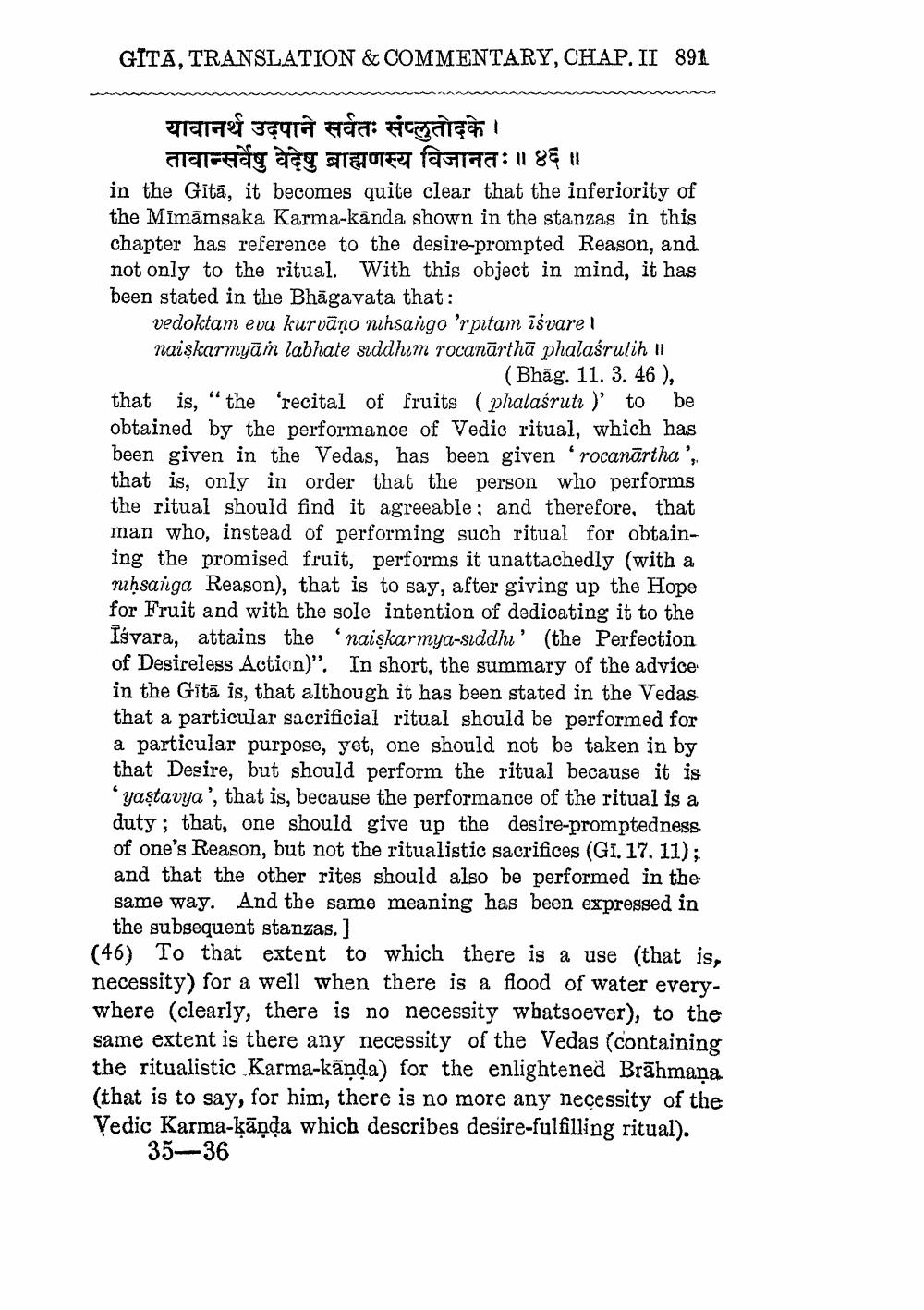________________
GITA, TRANSLATION & COMMENTARY, CHAP. II 891
यावानर्थ उदपाने सर्वतः संप्लुतोदके।
तावान्सर्वेषु वेदेषु ब्राह्मणस्य विजानतः॥४६ ॥ in the Gītā, it becomes quite clear that the inferiority of the Mimāmsaka Karma-kända shown in the stanzas in this chapter has reference to the desire-prompted Reason, and not only to the ritual. With this object in mind, it has been stated in the Bhāgavata that:
vedoktam eva kurvāṇo nihsango 'rpitam īśvare 1 naişkarmyām labhate siddhim rocanārthā phalaśrutih 11
(Bhāg. 11. 3. 46 ), that is," the recital of fruits (phalasruti )' to be obtained by the performance of Vedic ritual, which has been given in the Vedas, has been given "rocanārtha, that is, only in order that the person who performs the ritual should find it agreeable; and therefore, that man who, instead of performing such ritual for obtaining the promised fruit, performs it unattachedly (with a nuḥsanga Reason), that is to say, after giving up the Hope for Fruit and with the sole intention of dedicating it to the Isvara, attains the 'naişkarmya-siddhi' (the Perfection of Desireless Action)". In short, the summary of the advice in the Gītā is, that although it has been stated in the Vedas that a particular sacrificial ritual should be performed for a particular purpose, yet, one should not be taken in by that Desire, but should perform the ritual because it is ' yaştavya', that is, because the performance of the ritual is a duty; that, one should give up the desire-promptedness of one's Reason, but not the ritualistic sacrifices (Gi. 17. 11); and that the other rites should also be performed in the same way. And the same meaning has been expressed in
the subsequent stanzas. ] (46) To that extent to which there is a use (that is. necessity) for a well when there is a flood of water everywhere (clearly, there is no necessity wbatsoever), to the same extent is there any necessity of the Vedas (containing the ritualistic Karma-kāņda) for the enlightened Brāhmaṇa. (that is to say, for him, there is no more any necessity of the Vedic Karma-ķāņờa which describes desire-fulfilling ritual).
35-36




